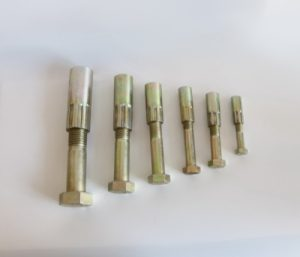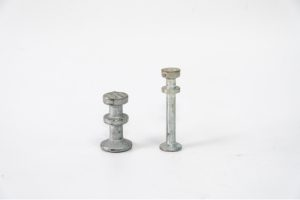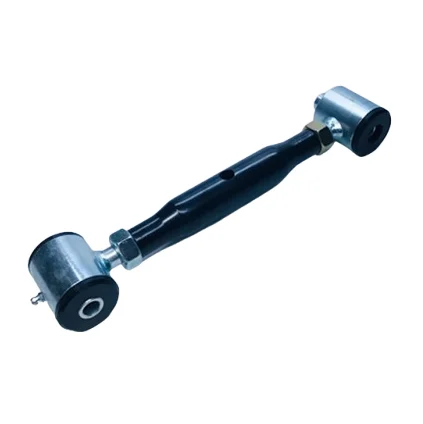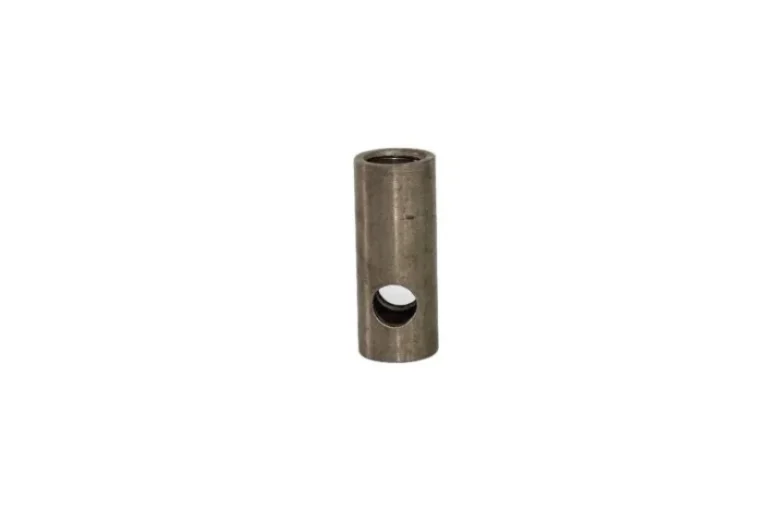Understanding Concrete Lifting Anchors
Definition and Functionality
Lifting anchors made of concrete are fasteners that are placed within the concrete to lift and secure objects or structures safely and securely without causing harm to the concrete stability or structural integrity when rigging and lifting equipment is attached to them in different applications where precision and safety are crucial, for evenly distributing the weight and preventing damage, to both the concrete and the object being lifted.
Types of Concrete Lifting Anchors
There are several types of concrete lifting anchors available, each designed for specific applications and load capacities. The common types include cast-in anchors, which are poured into wet concrete; and post-installed anchors that are inserted into cured concrete. Each type varies in design, installation methods, and load-bearing capabilities. The selection of the appropriate anchor type is essential, depending on the specific requirements of a project, including the nature of the load and the environmental conditions.
Factors Affecting Load Capacity
Concrete Strength and Composition
The load capacity of concrete lifting anchors greatly depends on the strength and composition of the concrete in which they are installed. Higher-grade concrete generally yields greater load-bearing capacity due to its denser structure and superior bonding properties. Factors such as the type of cement used, aggregate size, and the water-cement ratio can influence the concrete’s performance. It is crucial to evaluate these aspects to ensure that the concrete can support the desired load when using lifting anchors.
Anchor Design and Specifications
Material Quality
The quality of the materials used in lifting anchors is crucial, for their ability to support loads effectively. Using high-grade materials like grade 8 steel and corrosion alloys ensures that the anchors are durable and reliable, under pressure. On the other hand, using materials can cause anchor failure posing safety risks and causing considerable damage. Regular evaluations of material properties are essential to ensure that the anchors function as intended.
Size and Shape
The dimensions and design configuration of the concrete lifting anchor also contribute to its overall load capacity. Larger anchors with greater surface area can distribute weight more effectively, reducing stress on the concrete. Additionally, the shape of the anchor, whether it is threaded, eyelet, or looped, can influence its load distribution characteristics and the way it interacts with lifting equipment. Understanding these design parameters is essential in selecting the right anchor for specific lifting applications.
Testing and Safety Standards
Load Testing Procedures
To guarantee safety and adherence to regulations when it comes to lifting anchors it is crucial for these anchors to undergo load testing processes. These tests evaluate how well the anchor performs under load scenarios checking its strength and longevity. The typical procedure involves using equipment that applies force slowly until the anchor fails leading to a determination of its load-bearing capacity. Following testing protocols is vital to confirm that the anchors meet the required safety guidelines.
International and Local Standards
There are local regulations that oversee the design and installation of concrete lifting anchors to ensure their safety and functionality, in various lifting scenarios. The American Concrete Institute (ACI)s guidelines and the International Organization for Standardization (ISO)s standards establish criteria, for materials and performance to guarantee safety while lifting. Awareness of these standards is crucial for industry experts to keep abreast of the rules and requirements.
BaoQi Product Compliance
BaoQi offers a variety of lifting anchors that meet safety standards and undergo thorough testing to meet industry demands, for strength and longevity. Users can trust that they are using products crafted for both effectiveness and safety when using BaoQis anchors.
Real-World Applications
Industrial Use Cases
Concrete lifting anchors find extensive use in the industrial sector, playing a crucial role in various applications. Proper implementation of lifting anchors can significantly reduce the risk of accidents and improve productivity.
Construction Industry
In the building sector Elevating concrete anchors play a role, in hoisting prefabricated panels, beams, and other hefty building elements. They offer lifting spots for assembling and moving materials between levels. Using these anchors efficiently boosts the pace and effectiveness of construction ventures while reducing hazards for workers. Selecting the anchor along, with calculating loads can significantly impact the outcome of lifting tasks across construction situations.
Selecting the Right Anchor for Your Needs
Comparing BaoQi’s Range of Products
Standard Anchors
BaoQi offers a diverse selection of standard concrete lifting anchors designed for medium-weight applications. With varying load capacities, it is essential to match the anchor’s specifications with the load requirements of each project. Engineering designs and quality control measures implemented by BaoQi ensure that these standard anchors provide reliable performance across different settings.
BaoQis standard anchors are versatile. Can be used in a range of settings, like homes and light industrial spaces, with ease of installation that helps keep project schedules too! Following the installation instructions properly can boost the anchor’s load capacity. Reduce risks during lifting tasks.
Heavy-Duty Anchors
When it comes to tasks that demand lifting objects, with ease BaoQi manufactures concrete lifting anchors tailored for handling high loads. Crafted from materials to endure conditions these anchors provide enhanced load capacities and find practical use in industrial settings construction sites with heavy-duty requirements and large-scale infrastructure projects. The dependability of these anchors is essential, for hoisting components as they are constructed to reduce the risk of anchor malfunctions.
Maintenance and Inspection of Anchors
Regular Inspection Routines
Performing inspections is crucial, to maintain the effectiveness of lifting anchors as a fundamental practice in anchor safety and reliability assurance measures post installation and especially following extensive lifting activities for ensuring their integrity and functionality are not compromised by wear and tear or corrosion damage that could affect their performance adversely; it is recommended that inspectors utilize noninvasive testing techniques, like load testing or visual inspections to detect any underlying problems promptly.
Preventive Maintenance Practices
Regular maintenance is crucial, for extending the lifespan of lifting anchors and ensuring they work efficiently over time. This includes cleaning to remove any dirt or corrosive materials that could harm the anchors. Storing them properly away from conditions can also prevent damage. Professionals should inspect the concrete, for any signs of wear or cracks that may indicate a need to reassess the anchors.
Furthermore keeping records of how anchors are used and maintained can help in making choices about when to replace or upgrade them in the future. Regular maintenance doesn’t just keep the anchors working well. Also makes sure the work environment stays safe by lowering the chances of accidents occurring.
Enhancing Load Capacity with Proper Installation
Installation Techniques
Successful installation of concrete lifting anchors is crucial for optimizing load capacity and ensuring safe lifting operations. A thorough understanding of installation techniques is required, which encompasses aspects such as selecting the right equipment, preparation of the installation site, and anchor placement. It is important to adhere to specific installation guidelines outlined by manufacturers, focusing on factors such as spacing, orientation, and embedding depth of anchors. Each of these factors plays a significant role in maximizing the performance of the lifting anchor.
Training workers on installation best practices is equally important. Crew members must be knowledgeable about how to securely connect lifting devices to the anchors, thereby preventing slippage or misalignment during lifts. Additionally, the use of qualified personnel during the installation phase contributes to fewer errors and enhances overall safety.
Tools Needed
The equipment needed to install lifting anchors may differ depending on the type and size of anchors being used. The necessary tools typically include drills, wrenches, and torque tools that are tailored for anchor installation. Drill bits must be suitable, for the anchor type and concrete quality to ensure a connection that can support the intended load capacity.
Moreover, it is beneficial to have inspection equipment on hand to assess the anchors after installation. This can include level devices to ensure proper alignment and tension meters for verifying load specifications. Equipping teams with the right tools contributes to a streamlined installation process, ultimately enhancing anchor performance and safety.
Step-by-Step Process
A step-by-step installation process can significantly enhance the effectiveness of concrete lifting anchors. The initial step is to assess the site and prepare the installation area, including ensuring that the concrete surrounding the anchor is adequately cured and free from defects. Once preparations are complete, the appropriate hole must be drilled according to the anchor specifications, with attention to detail for depth and diameter.
After that step is completed successfully. The anchor is placed securely in the hole to guarantee stability and proper alignment before fastening it in place with methods such, as peening or grouting depending on the type of anchor to improve its stability within the concrete structure. Subsequent steps include checking the alignment and tension to utilization and performing thorough post-installation assessments to ensure everything is in order. Following this procedure diligently ensures that lifting anchors are installed at their capacity and ready, for safe lifting tasks.
Summary of Key Takeaways
To sum up, the discussion, about lifting anchors’ weight capacities requires a strategy involving evaluating factors like product selection and proper installation techniques while also emphasizing regular maintenance checks, for the safety of lifting operations in the long run.
Furthermore, proper installation methods and choosing the tools play a role, in increasing load capacity and reducing the chances of anchor failure risks. Ultimately adhering to engineering practices while using lifting anchors guarantees effectiveness,b safety, and dependability, in lifting tasks across various industries.










